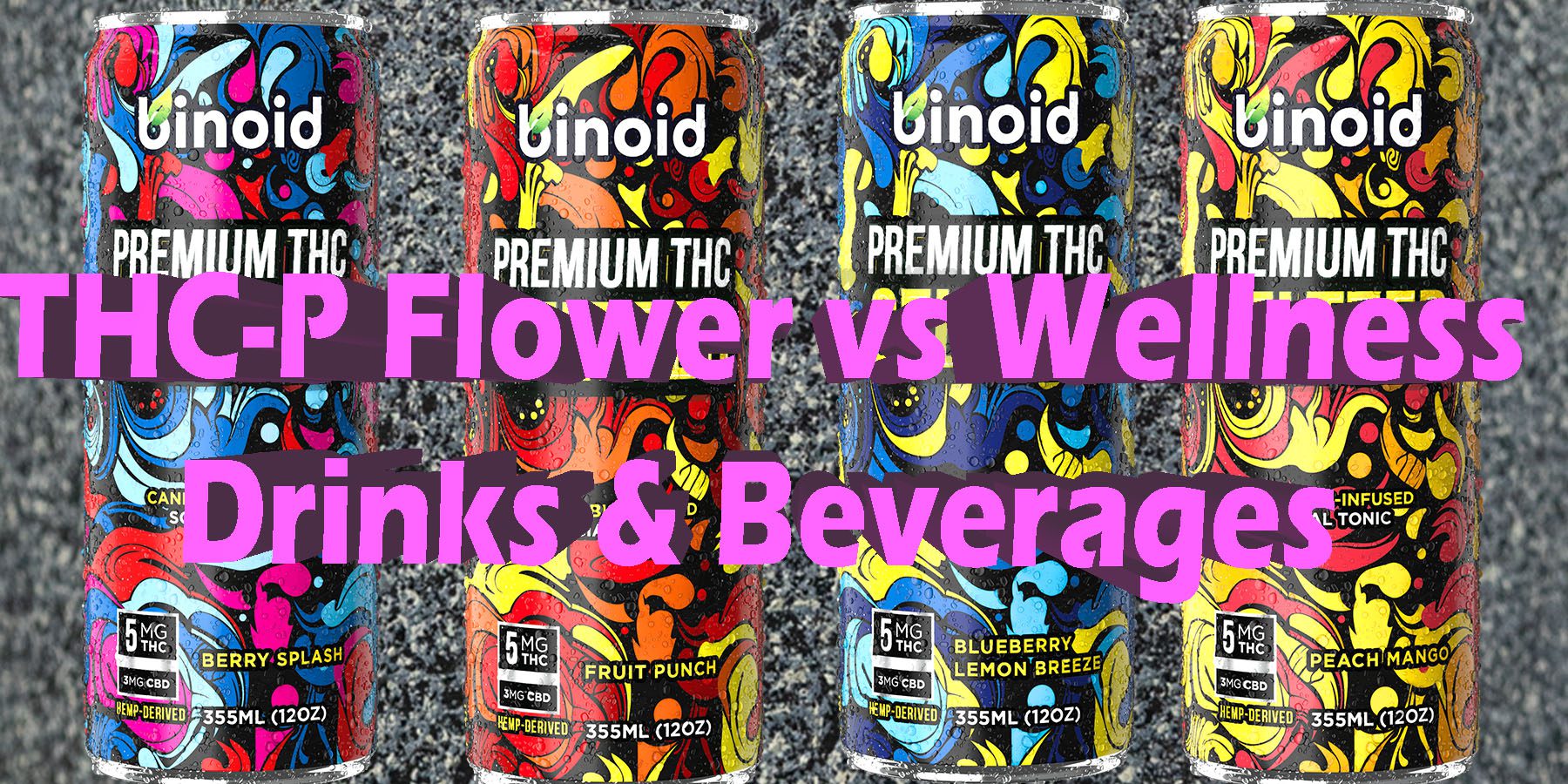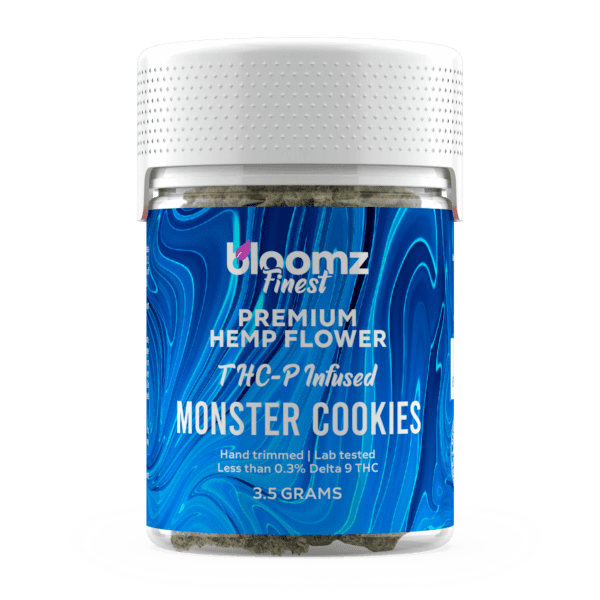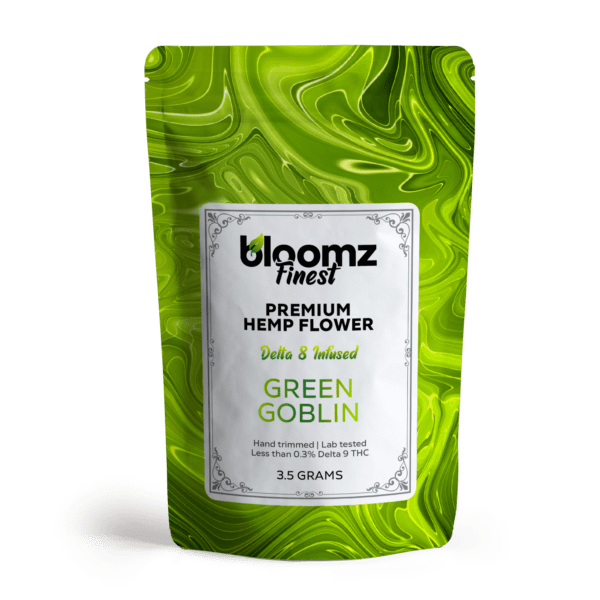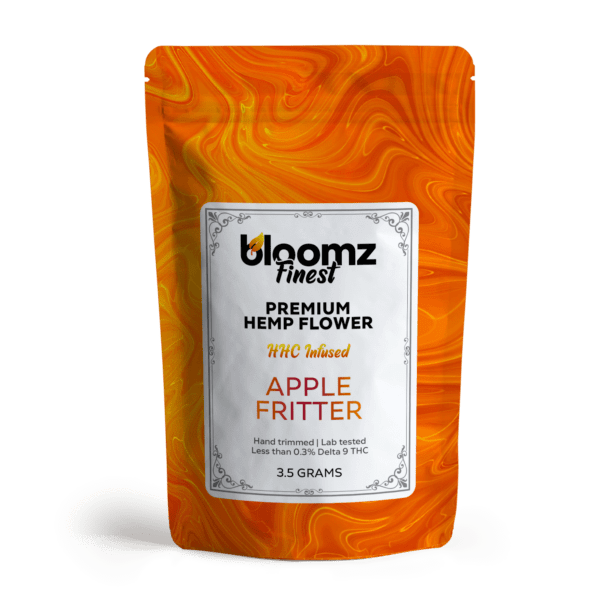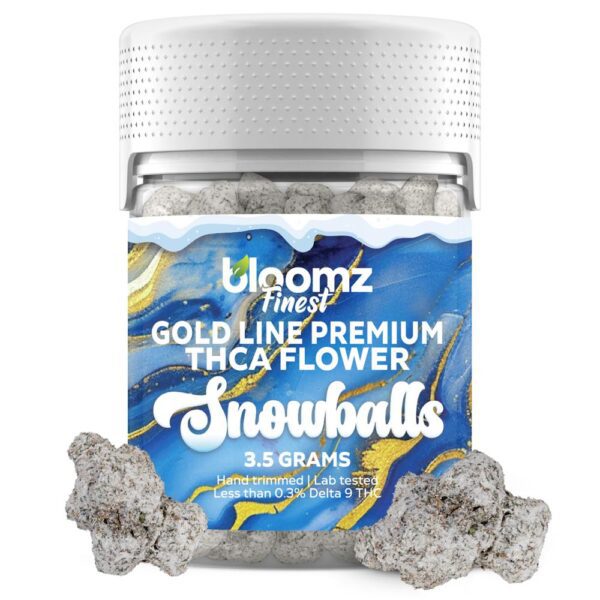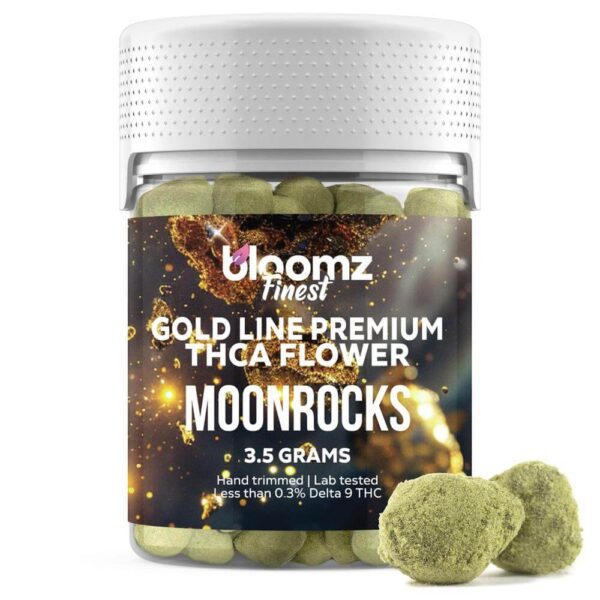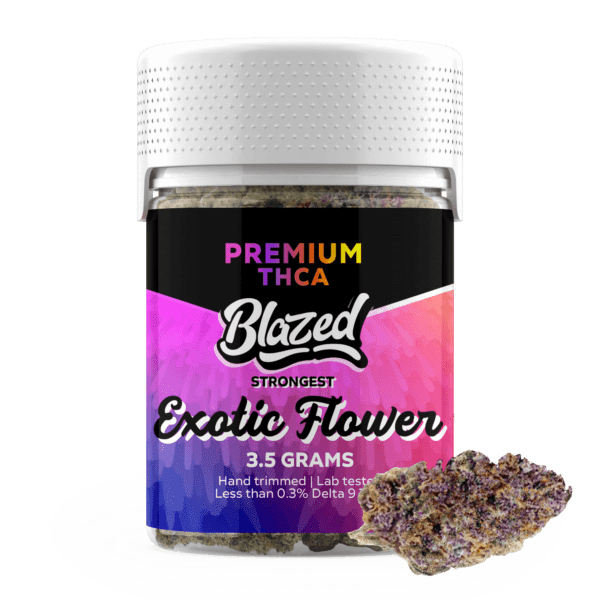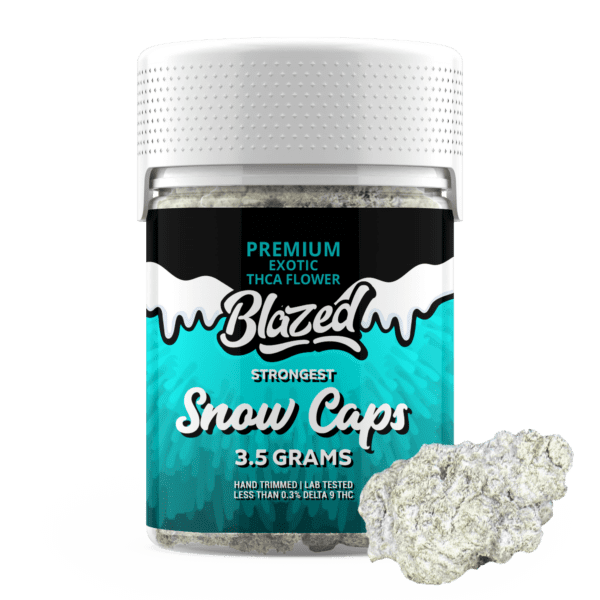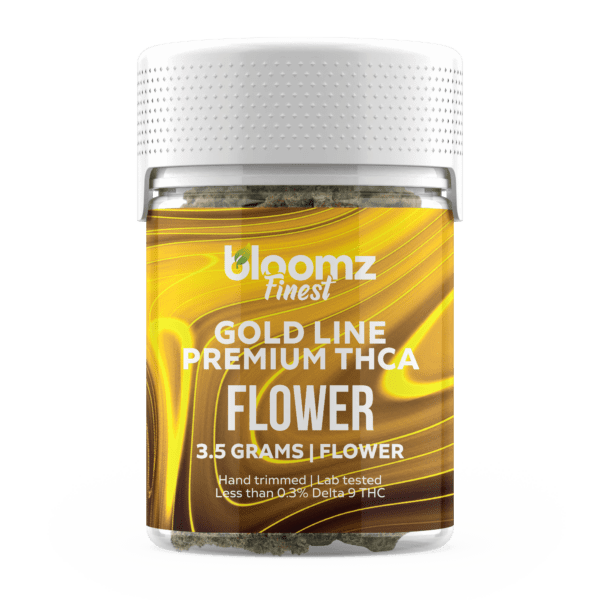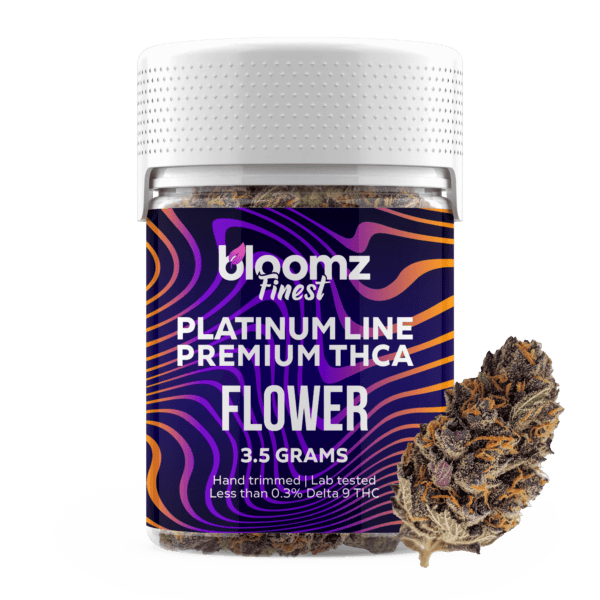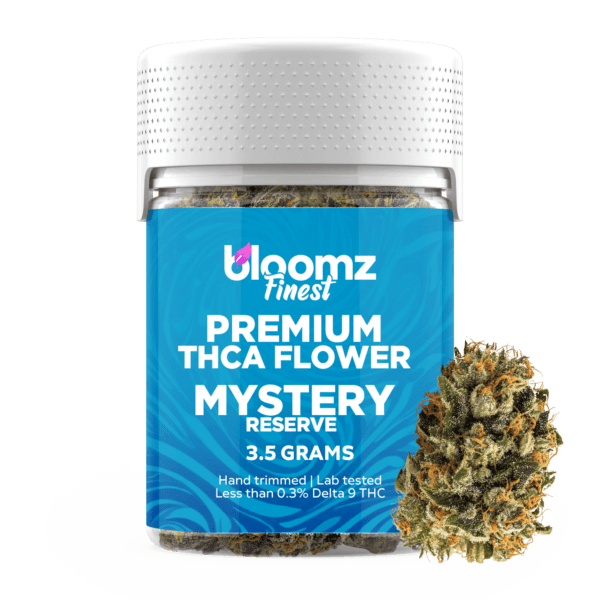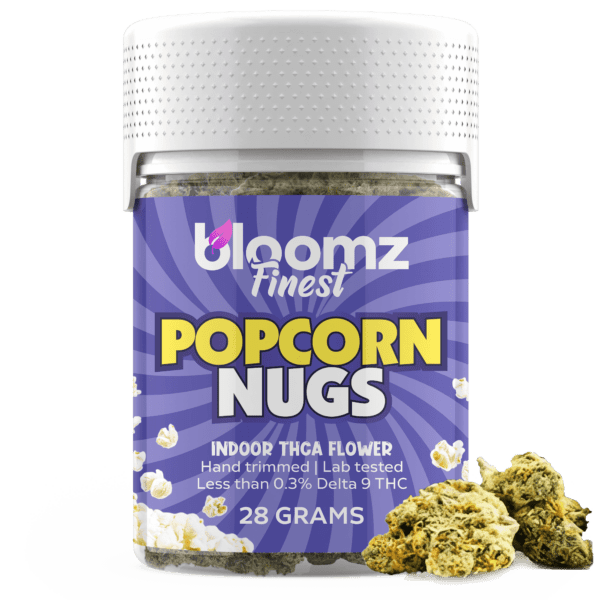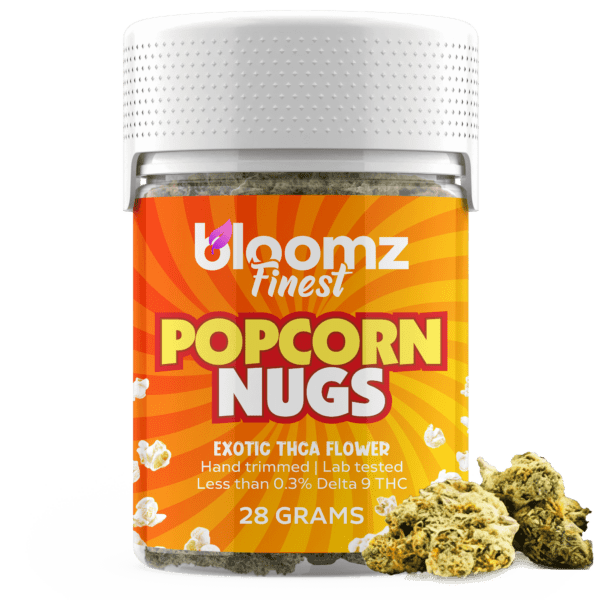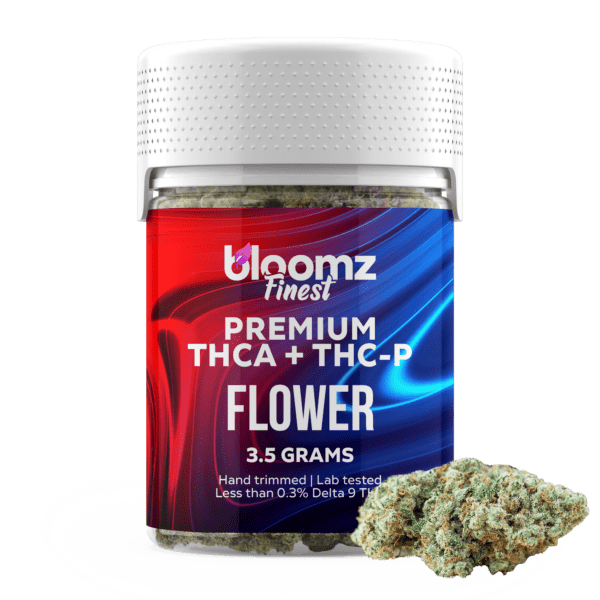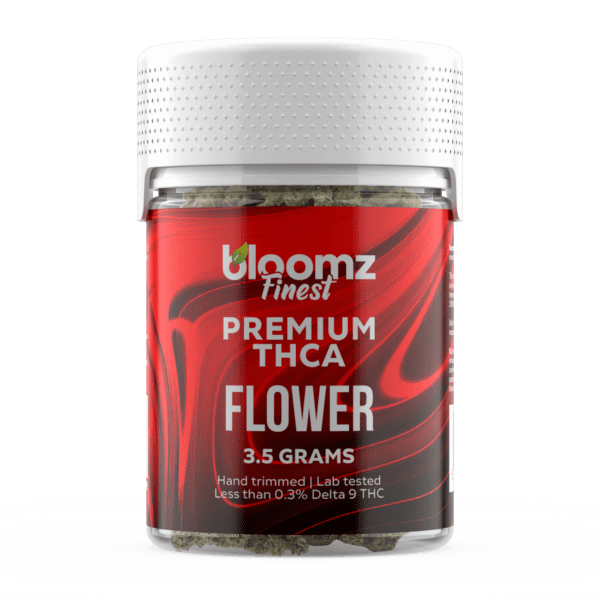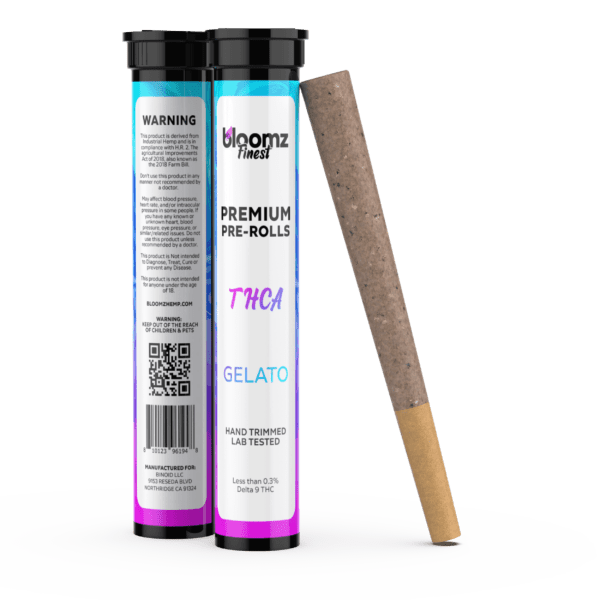In the ever-expanding universe of personal wellness, we stand at a thrilling new frontier, a place where botanical tradition is being supercharged by cutting-edge chemical discovery. The choices before us are no longer simple; they present a compelling narrative about the very nature of the experiences we seek. Do we wish to embark on a deep dive, exploring the most profound depths of potency through the classic, ritualistic medium of a flower? Or do we prefer to ride the swift current of innovation, sipping on a refreshing, socially-savvy beverage that delivers its effects with unprecedented speed for an edible?
This is the fundamental decision that lies at the heart of the matchup between the extraordinarily potent THC-P flower and the endlessly versatile, wellness-intended pre-packaged drink. One beckons the seasoned explorer to the very edge of the map, while the other offers a high-speed vessel for a more manageable, yet equally modern, journey.
TO BUY THC-P FLOWER CLICK HERE
Recommended products
Why It’s Important to Breakdown the Matchup of THC-P Flower vs. Wellness-Intended Pre-Made Drinks & Beverages
In a marketplace characterized by rapid scientific advancement, a meticulous and clear-eyed comparison of two profoundly different product formats like THC-P flower and infused beverages is not just a matter of consumer interest—it is a crucial exercise in promoting responsible and informed use. This particular matchup pits one of the most powerful cannabinoids currently known against the most technologically advanced and socially integrated edible delivery system. The gulf between these two products in terms of their intended audience, their experiential timelines, and the very science that makes them possible is vast.
By carefully dissecting their unique attributes—from the molecular structure that gives THC-P its incredible strength to the Nanoemulsion technology that gives beverages their speed—we can provide essential clarity. This detailed analysis serves as a vital guide, empowering individuals to make choices that are safe, appropriate for their experience level, and perfectly aligned with their personal wellness goals in this new era of high potency:
The Chasm of Potency and User Profile: The most critical distinction in this comparison is the staggering difference in potency and, therefore, the intended user. THC-P flower is an exceptionally powerful product, designed to produce an experience that is significantly more intense than even the strongest traditional THC. Its use must be reserved for highly experienced consumers with a substantial, well-understood tolerance. Wellness-intended drinks and beverages, by contrast, are designed for a much broader audience. While they can be formulated to be potent, their very nature as a sippable, “sessionable” product allows for more controlled and manageable experiences, making them suitable for a wider range of users, from the curious newcomer to the seasoned enthusiast.
The Philosophy of Creation: Infusion vs. Emulsion: Both products are marvels of modern manufacturing, but they are born from different scientific philosophies. THC-P flower is a product of infusion. It begins with a finished agricultural product—a high-quality hemp flower—which then serves as a carrier for a laboratory-synthesized THC-P distillate. It is an act of augmenting a natural form. An infused beverage is a product of emulsion. It is a liquid formulation built from the ground up that requires advanced food science to overcome the natural immiscibility of oil and water, creating a stable, homogenous, and highly bioavailable final product.
The Experiential Timeline: The Deep Dive vs. The Swift Current: The user’s journey with each of these products follows a vastly different timeline. Inhaling THC-P flower provides a rapid onset of effects that then unfold into an experience that is known to be exceptionally profound and very long-lasting—a true “deep dive.” An infused beverage, thanks to Nanoemulsion technology, offers the fastest onset of any edible, a “swift current” that can begin in as little as 15-30 minutes. However, the overall duration is typically shorter than that of a solid edible, providing a more manageable experience that fits more easily into a specific timeframe.
Navigating the Frontiers of Legality: Both products exist in the complex legal space created by the 2018 Farm Bill. However, novel and ultra-potent cannabinoids like THC-P attract the highest level of legal and regulatory scrutiny. Its semi-synthetic nature and extreme potency make it a target for state-level bans and federal re-evaluation. Infused beverages, while also navigating cannabinoid regulations, are subject to an additional layer of rules that govern food and beverage safety, manufacturing practices, and shelf-life stability, presenting a different set of challenges for producers.
Contender #1: THC-P Flower
In the high-performance world of hemp-derived cannabinoids, THC-P flower has arrived like a top-fuel dragster on a scene full of street cars. It is a product designed for a singular purpose: to deliver an unparalleled level of potency in the familiar, ritualistic format of a smokable flower. This is not a product for the faint of heart or the inexperienced; it is a creation that sits at the very apex of cannabinoid science, a testament to how modern chemistry can unlock new frontiers of the cannabis experience. Like its Delta 8 counterpart,
THC-P flower is not something that grows from the ground but is instead a meticulously crafted composite, a marriage of natural, high-quality hemp flower and a powerful, lab-synthesized cannabinoid. Its appeal is directed squarely at the seasoned connoisseur, the individual who has explored the existing landscape and is now seeking to venture to the highest peak. To engage with THC-P flower is to buckle up for an experience that is both profoundly intense and uniquely memorable.
To truly understand the power of THC-P flower, one must first grasp the science behind its namesake molecule, Tetrahydrocannabiphorol (THC-P). Discovered by a team of Italian researchers in late 2019, THC-P is a naturally occurring cannabinoid, or phytocannabinoid, found in the cannabis plant. What makes it so extraordinary is its unique molecular structure. All THC analogues have a long, flexible tail called an alkyl side chain. The length of this chain is a critical factor in determining how strongly the molecule can bind to the CB1 receptors in the human brain, which is the primary interaction responsible for producing euphoric effects.
The well-known Delta 9 THC has a five-carbon (pentyl) side chain. The groundbreaking discovery of THC-P revealed that it possesses a much longer, seven-carbon (heptyl) side chain. This seemingly small difference of two carbon atoms has a massive impact on its binding affinity. The original research suggested that THC-P can bind to the CB1 receptor up to 33x more effectively than Delta 9 THC. While this does not mean it is “33 times stronger” in terms of subjective experience, it does mean it is a significantly more potent compound, capable of producing profound effects at much smaller doses.
Given that THC-P isn’t naturally abundant, the concept of a “THC-P flower” is similar to that of Delta 8 flower—it is a manufactured, infused product. The process begins not with a plant that grows THC-P, but with a standard, high-quality hemp flower that is rich in CBD or CBG. This beautiful, terpene-rich hemp bud serves as the delivery mechanism for the star of the show. The extraordinarily potent THC-P, which exists as a thick distillate oil after its laboratory conversion from CBD, is then carefully applied to the exterior of the hemp flower.
Recommended products
This creates a final product that has the appearance, aroma, and consumption methods of traditional cannabis, but with effects that are supercharged to an entirely new level. Basically, the creation of THC-P flower is a sophisticated, multi-stage process:
Sourcing of Elite-Grade Hemp Flower: The entire process starts with the selection of a premium botanical canvas. Reputable manufacturers source AAAA-grade, indoor-grown CBD or CBG flower. The chosen flower must have excellent physical characteristics—a dense structure, a beautiful appearance, and a proper cure—and, most importantly, a rich and vibrant profile of natural terpenes, as these will provide the flavor and aroma for the final product.
Synthesis of THC-P Distillate: In a separate, highly specialized laboratory setting, the ultra-potent active ingredient is created. This complex process involves multiple steps of chemical conversion, starting with CBD isolate. Through a series of reactions, the molecular structure of the CBD is rearranged to create the THC-P molecule with its signature seven-term side chain. This is a highly technical process that requires skilled chemists and advanced equipment. The resulting crude extract must then undergo extensive purification and distillation to remove all residual solvents and unwanted byproducts, yielding a pure, potent, and safe THC-P distillate.
The Precision Infusion Process: This is the most critical and delicate step in the creation of THC-P flower. Due to the extreme potency of the THC-P distillate, the infusion must be done with unparalleled precision to avoid creating dangerous “hot spots.” A common method involves using a solvent to dilute the thick distillate, which is then lightly and evenly sprayed over the hemp buds while they are being gently tumbled. The amount of distillate used is very small relative to the flower’s weight. After the application, the solvent is fully evaporated, leaving a light, even coating of THC-P on the flower.
Final Curing and Inspection: After the infusion process, the flower must be allowed to properly cure. This final stage ensures that any residual moisture or tackiness from the infusion process is gone, resulting in a product that is pleasant to the touch and that will burn or vaporize smoothly and evenly. Each batch is then visually inspected for consistency.
Rigorous, Full-Panel Lab Testing: For a product as potent as THC-P flower, third-party lab testing is not just important—it is an absolute necessity for consumer safety. A comprehensive Certificate of Analysis (COA) must be provided. This document verifies the potency of the THC-P, ensuring it matches the advertised levels. Crucially, it must also include a full panel of safety tests to prove the product is completely free from any residual solvents, heavy metals, pesticides, or other harmful contaminants.
The market for THC-P flower is still nascent and highly specialized, catering primarily to the most experienced and discerning consumers. The different categories available are defined by the quality of the base hemp flower and the potency of the final infusion. Because of the premium nature of THC-P, it is typically only applied to high-quality flower:
Indoor THC-P Flower: This is the standard for quality. The product is made using a base of premium, indoor-grown CBD or CBG hemp flower. This ensures the final product has a beautiful appearance, a dense structure, and a rich, natural terpene profile that provides a delicious flavor and aroma to complement the powerful effects of the THC-P.
Outdoor THC-P Flower: While less common due to the high cost of the THC-P distillate, some brands may offer a more budget-friendly option by using high-grade, sun-grown outdoor hemp flower as the base. While the effects of the THC-P would be the same, the overall sensory experience in terms of flavor and aroma might be more muted compared to the indoor version.
THC-P Nugs: This term simply refers to the standard, full-sized buds of the base hemp flower that have been infused with THC-P. This is the primary form in which the product is sold, allowing the user to see the quality of the underlying flower.
THC-P Moonrocks: For the absolute pinnacle of potency, THC-P moonrocks are in a league of their own. The creation process involves taking a high-quality CBD/CBG nug, coating it in sticky THC-P distillate, and then rolling the entire thing in a thick layer of CBD or CBG kief. The resulting product is extraordinarily potent and is intended only for users with the highest of tolerances.
THC-P Pre-Rolls, Blunts & Joints: Offering convenience, pre-rolls are made from ground-up THC-P flower that has been professionally packed into papers or hemp wraps. This allows for an easier, more controlled way to sample this potent product, as a user can take a single, small puff from a pre-roll and wait to gauge the intense effects before proceeding.
When purchasing THC-P flower, it is vital to understand the significance of the “strain” name. A product labeled “Northern Lights THC-P Flower” isn’t a naturally grown THC-P strain. The name, in this case “Northern Lights”, refers to the genetic strain of the base CBD or CBG hemp flower that was used in the manufacturing process. The overall experience will be a powerful synergy between the natural terpene profile of that base flower and the exceptionally potent, overarching effects of the THC-P distillate itself. The terpenes from the base strain can help to “steer” or modulate the intense THC-P experience.
Indica: When a relaxing, Indica-dominant CBD hemp strain is used as the base, its natural terpene profile, rich in compounds like myrcene, may help to temper the intense cerebral effects of the THC-P and ground the experience more in the body. The result is likely to be a profoundly relaxing and deeply blissful state, best suited for a quiet, comfortable, and safe environment with no plans or obligations.
Sativa: If a Sativa-dominant CBD hemp strain is used as the base, its uplifting and energetic terpenes, like limonene and terpinolene, will combine with the powerful euphoria of THC-P. This could result in an intensely cerebral, creative, and perceptually-altering experience. This combination is likely to be extremely stimulating and is intended only for users who are very comfortable with powerful psychoactive effects.
Hybrid: A balanced Hybrid CBD hemp strain used as the base can offer a middle ground. The blend of terpenes may provide both cerebral stimulation and physical relaxation, creating a powerful but potentially more well-rounded experience. However, given the overwhelming potency of THC-P, these subtle differences between strains may be less pronounced than they are with less potent cannabinoids.
The legal status of THC-P flower in the United States is complex and exists in a significant legal gray area. Its claim to legality stems from the 2018 Farm Bill, which legalized hemp and its derivatives, defining hemp as cannabis containing less than 0.3% Delta 9 THC. Since THC-P is a cannabinoid found in hemp and is not Delta 9 THC, it is sold under this provision. However, this position is highly contentious. Because the commercial supply of THC-P is created by chemically converting hemp-derived CBD, it faces strong arguments that it is a “synthetically derived” cannabinoid, which would make it a controlled substance under the Federal Analogue Act.
Furthermore, its extreme potency has drawn significant attention from lawmakers. As a result, many states have already moved to ban or restrict the sale of THC-P and other novel, highly potent cannabinoids. The legal landscape is volatile and can change rapidly, so consumers must research the most current laws in their specific location before considering a purchase.
Recommended products
The methods for consuming THC-P flower are the same as for any other smokable flower, but they must be approached with a level of caution that is an order of magnitude higher. Due to the extreme potency of this product, the golden rule is to start with the smallest possible amount and wait a significant amount of time to gauge the effects. This cannot be overstated. For even the most seasoned cannabis users, a single, small puff may be more than sufficient to produce a powerful and long-lasting effect.
Vaping (using a portable or desktop vaporizer): Vaping is often the recommended method for a product this potent. A good vaporizer allows for temperature control, which can provide a smoother and more flavorful experience. Most importantly, it makes it easier to take a very small, controlled inhalation compared to smoking.
Smoking: While perfectly effective, smoking in a pipe or bong can make it easy to accidentally inhale too much. If smoking, it is advisable to pack a minuscule amount or to use a “one-hitter” pipe. When using a pre-roll, taking one tiny puff and then extinguishing it for later is a wise approach.
Cooking/Baking: It is technically possible to use THC-P flower to make edibles, but it is strongly discouraged for home use. The extreme potency of the material makes it incredibly difficult and potentially dangerous to dose accurately in a home kitchen. The risk of creating an edible that is overwhelmingly powerful is exceptionally high.
The overall effects of THC-P flower are best described as a significantly amplified and longer-lasting version of the effects of traditional Delta 9 THC. The experience is characterized by a profound and intense sense of euphoria, deep physical relaxation, and significant alterations in sensory perception, such as colors appearing more vibrant and sounds seeming more detailed. Users may also experience a powerful “body buzz” and a deep sense of blissful contentment.
However, because of its powerful interaction with the CB1 receptors, the experience can be overwhelming for those who are not prepared for its intensity. The effects also have a much longer duration than traditional THC, sometimes lasting for many hours. This product is exclusively for advanced, experienced cannabinoid users with a very high tolerance who are seeking to explore the upper limits of potency in a smokable format. It must be used responsibly and in a safe, comfortable environment.
Pros & Cons
THC-P flower, a product at the cutting edge of cannabinoid science, offers a unique and powerful experience. However, its extreme potency and manufactured nature come with a very specific set of pros and cons that must be carefully weighed, especially in comparison to more conventional products.
Pros:
Unparalleled Potency: The most obvious and significant advantage of THC-P flower is its extraordinary potency. For experienced users with a very high tolerance who may find traditional products no longer provide the desired level of effect, THC-P offers a new and powerful frontier. It provides a profound level of intensity that is unmatched by nearly any other cannabinoid in a flower format.
High Efficiency and Cost-Effectiveness: Because THC-P is so incredibly potent, only a very small amount is needed to produce a strong effect. A single gram of THC-P flower can last a user much longer than a gram of traditional flower, as a single puff may be sufficient. This high level of efficiency can make it a more cost-effective option in the long run for high-tolerance users.
A Novel and Unique Experience: For the seasoned cannabis connoisseur, THC-P offers a genuinely new and different experience. The specific character of its effects, including its intensity and duration, is distinct from other cannabinoids. This provides an opportunity for experienced users to explore a new facet of the cannabis plant’s potential.
Combines Potency with the Flower Ritual: Despite its lab-created active ingredient, THC-P flower still allows users to engage in the familiar and cherished ritual of smoking or vaping. It combines the hands-on process of grinding and packing a bowl with a cutting-edge cannabinoid experience. This fusion of tradition and novelty is a major draw for many.
Fast-Acting, Intense Effects: Like all smokable flower, the effects of THC-P flower are delivered nearly instantaneously. This rapid onset is ideal for users who want to feel the effects immediately, without the long and unpredictable wait time associated with edibles.
Potential for Strong Feelings of Bliss: Users often report that the experience of THC-P is characterized by a particularly profound sense of euphoria and bliss. For those seeking an intensely uplifting and mood-enhancing experience, the sheer power of THC-P can be a significant advantage.
Terpene-Driven Flavor and Aroma: Because THC-P flower is made using a high-quality CBD or CBG hemp flower as a base, it still offers a rich sensory experience. The natural terpenes of the base flower provide a complex and enjoyable aroma and flavor, which can help to modulate and enhance the overall experience.
Availability in Non-Legal States: Similar to Delta 8 THC, THC-P flower is available for purchase in many states that do not have legal adult-use cannabis programs. This provides a legal pathway for experienced users in those regions to access a product with a level of potency that would otherwise be unavailable to them.
Precise Titration is Possible: While the substance itself is potent, the inhalation format allows for a degree of control. A user can take one very small puff and wait 15-20 minutes to fully gauge the effects before considering another. This allows for a more controlled ascent into the powerful experience compared to an edible.
Long Duration of Effects: The powerful binding affinity of THC-P to the CB1 receptor not only contributes to its intensity but also to its duration. The effects of THC-P are known to last significantly longer than those of Delta 9 THC, providing a sustained and powerful experience from a single session.
Cons:
Extreme Potency is Not for Everyone: The primary pro of THC-P is also its most significant con. Its overwhelming potency makes it completely unsuitable for beginners, intermediate users, or anyone with a low tolerance. The risk of an uncomfortably intense and overwhelming experience is extremely high for those who are not prepared for it.
Higher Risk of Unwanted Side Effects: Due to its intense psychoactivity, THC-P may have a higher potential to produce unwanted side effects such as feelings of unease, paranoia, or dizziness, especially if too much is consumed. The line between a blissful experience and an uncomfortable one is much finer than with less potent cannabinoids.
Manufactured and Not “Natural”: For consumers who value products that are as close to their natural state as possible, THC-P flower is a significant departure. The fact that the active ingredient is a laboratory conversion product applied to a different flower can be a major drawback for purists.
Volatile and Uncertain Legal Status: THC-P exists in a precarious legal gray area. Its semi-synthetic nature and extreme potency make it a prime target for state-level bans and federal reclassification. Consumers face the risk that the product could become illegal in their area at any time, making its long-term availability uncertain.
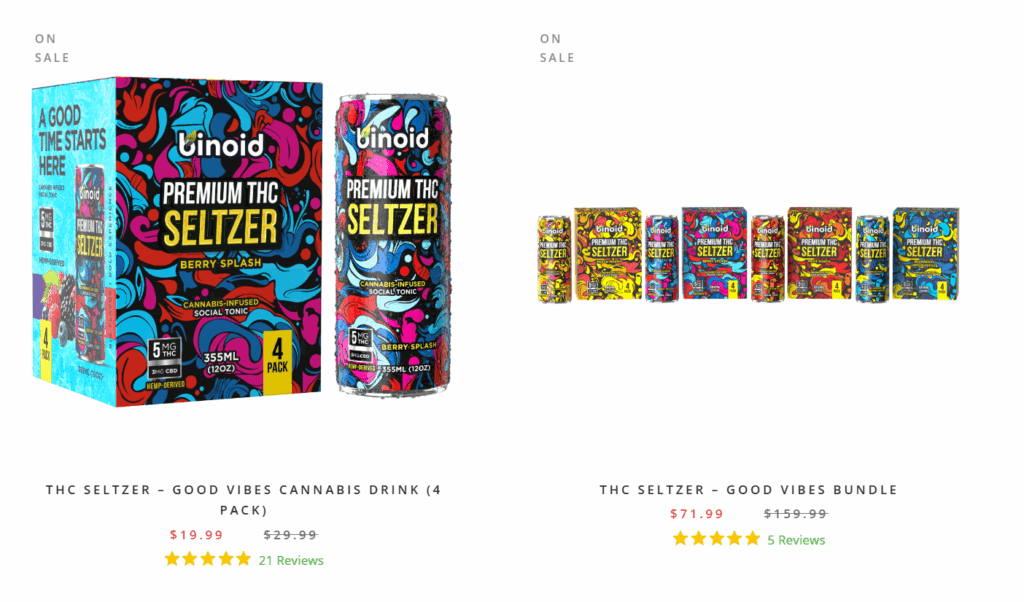
Contender #2: Pre-Packaged Drinks & Beverages
Emerging as the newest and perhaps most sophisticated frontier in the world of wellness consumables, pre-packaged drinks and beverages offer a refreshingly modern and socially integrated way to enjoy a wide array of active ingredients. This category represents a significant evolution in the edibles space, moving beyond solid foods to liquid formulations that prioritize hydration, rapid absorption, and unparalleled convenience. From sparkling seltzers and craft sodas to calming teas and complex mocktails, infused beverages are designed to fit seamlessly into the rhythm of everyday life.
They are at the forefront of the “sober curious” movement and the cultural shift from simple intoxication to the nuanced art of “mood curation.” Leveraging advanced food science technology, these drinks solve the age-old problem of mixing oil-based compounds with water, resulting in a product that is not only delicious and refreshing but also remarkably consistent and predictable in its effects, making them the perfect tool for the modern, mindful consumer.
Pre-packaged drinks and beverages are, at their core, ready-to-drink (RTD) liquid formulations that have been infused with precisely measured doses of specific wellness ingredients. This broad category encompasses an enormous range of products, positioning them alongside other popular RTD staples like hard seltzers, canned cocktails, and kombuchas in the modern consumer’s refrigerator. Unlike powdered mixes that require preparation, these products are sold in their final, consumable form in cans or bottles, offering the highest level of convenience.
They can be broadly categorized into full-volume “beverages” designed for sipping and refreshment, and smaller, highly concentrated “shots” or “elixirs” designed for a rapid, potent effect. The liquid format is the key to their unique properties; it allows for the use of technologies that can lead to faster absorption than solid edibles and provides a perfect vehicle for a wide array of complex flavor profiles. The focus is on creating a holistic experience that combines the functional benefits of the active ingredient with the fundamental pleasure and social normalcy of enjoying a drink.
The creation of a high-quality, shelf-stable, and effective infused beverage is a complex process that takes place at the intersection of beverage manufacturing and pharmaceutical science. It requires specialized equipment and a deep understanding of liquid dynamics, solubility, and preservation techniques to ensure that every can or bottle delivers a consistent, safe, and enjoyable experience. The journey from raw ingredients to a finished, ready-to-drink product involves several critical and technologically advanced steps:
Water Profile and Preparation: The process begins with the very foundation of the beverage: water. This water undergoes extensive treatment, not just filtration to remove impurities, but often deaeration to remove dissolved oxygen (which can degrade flavor and active ingredients) and sometimes re-mineralization, where specific minerals are added back to create a desired “water profile” that enhances the overall taste and mouthfeel.
The Science of Solubility: Active Ingredient Emulsification: This is the most critical and technologically advanced step. Most key wellness ingredients, particularly cannabinoids like Delta 8 THC, are lipophilic (oil-based) and thus hydrophobic (do not mix with water). To overcome this, manufacturers employ a process called Nanoemulsion. Using high-power sonic waves or high-pressure homogenizers, they shatter the cannabinoid oil into microscopic droplets (the “dispersed phase”), which are then encapsulated with a food-grade surfactant or emulsifier (like lecithin or polysorbate). This creates a stable emulsion that allows the tiny oil droplets to be evenly dispersed throughout the water (the “continuous phase”), resulting in a clear, non-oily liquid that is also more readily bioavailable to the body.
Flavor Science and Formulation: Once the water-soluble emulsion is created, the beverage’s unique flavor profile is developed. This is a scientific art form, often involving “flavor houses” that design complex blends of natural and artificial flavors. Beverage scientists work to perfect the delicate balance of sweetness (from sugar, stevia, etc.), acidity (using citric or malic acid to achieve a target pH level), and any inherent bitterness from the active ingredients to create a delicious and harmonious final product.
Large-Scale Infusion and Homogenization: The precisely measured nanoemulsion is then blended into the large, multi-gallon batch of the flavored base liquid. To guarantee perfect consistency from the first can to the last, the entire batch is then subjected to another round of homogenization. This process ensures that the active ingredient is perfectly and evenly distributed, eliminating any possibility of inconsistent dosing within the batch.
Carbonation and Finishing Touches: For sparkling beverages, the finished, chilled liquid is passed through a carbonator, which injects pressurized carbon dioxide to create the desired level of fizziness. Specialty drinks, like nitro cold brew coffee, are infused with nitrogen gas instead, which creates smaller bubbles and a distinctively smooth, creamy texture.
Ensuring Shelf Stability: Pasteurization and Preservation: To ensure the beverage is safe and shelf-stable, it typically undergoes pasteurization, a process of briefly heating the liquid to eliminate any potential pathogens. This can be done via tunnel pasteurization (heating the filled cans) or flash pasteurization (heating the liquid before canning). Additionally, food-grade preservatives like potassium sorbate or natural alternatives like citric acid are often used to inhibit microbial growth and maintain quality over time.
Packaging: Canning or Bottling: The final, finished beverage is then sent to a high-speed, automated packaging line. The cans or bottles are often purged with nitrogen gas to remove any oxygen before being filled with the liquid and immediately sealed and capped. This crucial step prevents oxidation, which can ruin the flavor and degrade the active ingredients. The containers are then labeled with all necessary regulatory, ingredient, and dosage information before being packaged for distribution.
The sheer diversity within the infused drinks and beverages category is one of its most exciting aspects. The liquid format is an incredibly versatile canvas, allowing for a vast range of products that cater to nearly every imaginable taste preference, dietary need, and social occasion. This has led to an explosion of creativity in the market, with brands launching everything from simple, health-focused waters to complex, cocktail-inspired creations:
Seltzers: Riding the wave of the hard seltzer boom, infused seltzers have become one of the most popular formats. They are the minimalist’s choice, typically featuring zero calories and zero sugar, and offering a light, crisp, and highly refreshing experience. The gentle carbonation and subtle hints of natural fruit flavors like lime, grapefruit, or black cherry make them a perfect, guilt-free canvas for active ingredients and an easy entry point for new consumers.
Sodas: For those with a more traditional and nostalgic palate, infused craft sodas offer a comforting and flavorful experience. Brands are reimagining classic soda fountain flavors like cola, root beer, orange cream, and ginger ale, but with a modern, functional twist. These products combine the familiar comfort of a sweet, fizzy soda with the novel effects of cannabinoids or adaptogens, offering a playful and indulgent treat.
Waters: At the simplest and healthiest end of the spectrum, infused waters focus on the core benefit of hydration. These can be found in both still and sparkling varieties and are often enhanced with just a hint of natural botanical or fruit essence, like cucumber mint or lemon ginger. They appeal directly to the health-conscious consumer who wants the functional benefits of an active ingredient without any added sugars, calories, or artificial flavors.
Lemonade & Tea: These classic, universally beloved beverages are perfect vehicles for infusion due to their strong, pleasant flavor profiles. Infused lemonades can be sweet, tart, and incredibly refreshing on a hot day. Infused teas, available in varieties like calming chamomile, classic black tea, or antioxidant-rich green tea, offer a more nuanced and traditional experience. Both are familiar, highly accessible, and excellent at masking any undesirable flavors from the botanical extracts.
Coffee: This innovative category combines the world’s most popular stimulant with other functional ingredients to create a unique “stacked” effect. Infused coffee is typically sold as shelf-stable canned cold brews or nitro cold brews. These products often pair the natural energy of caffeine with the balancing properties of CBD to create a “calm focus” state, or they may be infused with cognitive-supporting functional mushrooms like Lion’s Mane to enhance the mental clarity of the coffee experience.
Mocktails: Designed for the sophisticated palate and the modern socialite, infused mocktails are complex, non-alcoholic beverages crafted to replicate the experience of a high-end cocktail. They are not simple juice mixers; they often feature layered and nuanced flavors from botanical extracts, artisanal bitters, complex syrups (shrubs), and citrus oils. Infused with ingredients like Delta 8 THC or calming adaptogens, they provide a relaxing, social buzz without the alcohol, making them perfect for a refined evening.
Non-Alcoholic Drinks: This broader category includes the emerging and exciting products of infused non-alcoholic beers and dealcoholized wines. These beverages undergo the full fermentation process to develop their characteristic flavors, after which the alcohol is gently removed. The infusion of cannabinoids or other botanicals then adds back the “social ritual” and relaxing component, making them an ideal one-to-one replacement for their alcoholic counterparts.
A significant portion of the wellness beverage market is dedicated to products fortified with essential vitamins and minerals. These drinks are designed to support overall health and hydration, leveraging the convenience of a ready-to-drink format to help consumers meet their daily nutritional needs. They are often marketed as a healthier alternative to sugary sodas and fruit juices, providing functional benefits beyond simple thirst-quenching.
This category includes a wide range of “vitamin waters,” which are typically non-carbonated and come in various fruit flavors, each fortified with a specific blend of vitamins like C, B3, B5, B6, and B12, along with antioxidants. Another popular segment is electrolyte-enhanced beverages. These are formulated to aid in hydration by replenishing the key minerals—such as sodium, potassium, and magnesium—that are lost through sweat during exercise or on a hot day. They are popular among athletes and active individuals but are also beneficial for everyday hydration and wellness.
The largest and most dynamic sector of the infused beverage market is unquestionably those containing hemp-derived cannabinoids. These drinks have revolutionized the way people consume cannabinoids, offering a method that is not only smoke-free but also socially acceptable and incredibly precise in its dosing. The key innovation that makes these beverages possible is Nanoemulsion technology, which creates a water-soluble form of cannabinoid oils that can be easily mixed into any liquid base.
This technology also increases the bioavailability of the cannabinoids, allowing for a faster onset of effects compared to traditional solid edibles. The range of cannabinoids featured in these drinks is vast, including non-intoxicating options like CBD for general wellness and balance, CBG for its soothing properties, and CBN for relaxation. The market also includes a wide variety of intoxicating options, such as Delta 8 THC for a milder euphoric experience and federally compliant Delta 9 THC for the classic, potent effects.
Kratom-infused beverages, often sold as concentrated “shots” or brewed teas, offer a convenient way to experience the unique, dose-dependent effects of this Southeast Asian botanical. The active compounds in Kratom, primarily Mitragynine, can produce stimulating and energizing effects at lower doses, making a Kratom shot a popular choice for a morning or mid-day boost.
At higher doses, the effects become more sedating and relaxing, making a brewed Kratom tea a common choice for winding down in the evening. The beverage format allows for easy consumption and relatively rapid absorption compared to raw powder, and different drinks are often formulated with specific Kratom strains (Red, Green, or White vein) to target a desired experience, from energetic to tranquil.
Kava, a traditional ceremonial root from the Pacific Islands, is renowned for its calming and sociability-promoting properties, making it a perfect fit for the beverage format. Kava-infused drinks are rapidly gaining popularity as a non-alcoholic alternative for social situations. The active compounds, kavalactones, are known to promote a sense of mental relaxation and ease without significant cognitive impairment, helping to reduce everyday tensions and encourage conversation. Packaged Kava drinks, from sparkling tonics to concentrated shots, provide a simple and palatable way to enjoy these effects, offering a “social buzz” that can be a welcome substitute for alcohol for those seeking to unwind and connect with others in a more mindful way.
A niche but fascinating category is beverages infused with extracts from the Amanita mushroom. It is critically important to distinguish these from psilocybin-containing “magic mushrooms.” Amanita beverages contain the compound muscimol (derived from the conversion of ibotenic acid in the mushroom) and provide a unique, legal psychoactive experience that is more dissociative, sedative, and dream-like. These drinks, often sold as small, potent elixirs or tonics, are designed for users seeking to explore altered states of consciousness. The effects can include a warped sense of time and perception, and due to their potency, they are intended to be consumed in small, carefully measured doses in a safe and comfortable environment.
Functional mushroom-infused beverages have exploded in popularity as part of the broader wellness and nootropics movement. These drinks are non-psychoactive and are designed to be consumed daily to support various aspects of health and cognitive function. Mushroom coffee is one of the most popular products, often featuring a blend of coffee with extracts like Lion’s Mane to support focus and memory, and Cordyceps to support energy and stamina. Other products include mushroom teas and wellness shots that might contain Reishi for its adaptogenic, relaxation-promoting properties, or Chaga and Turkey Tail for their high antioxidant content and immune-supportive benefits. These beverages offer a simple way to incorporate the power of these celebrated fungi into one’s daily routine.
The overall effects of pre-packaged drinks and beverages are defined by their unique place in the edibles spectrum. Thanks to the use of advanced nanoemulsion technology, which makes the active ingredients more bioavailable, the onset of effects from a liquid can be significantly faster than from a solid food product. While a traditional brownie might take an hour or more to kick in, the effects of an infused beverage can often be felt in as little as 15 to 30 minutes. However, this faster onset is often accompanied by a shorter overall duration compared to solid edibles. The experience from a drink might last for 2 to 4 hours, whereas a brownie’s effects could last for 6 hours or more. This creates a unique “experiential curve” that many find ideal—it’s faster acting and more predictable than a traditional edible, but longer-lasting and more body-focused than inhalation, offering a desirable middle ground for many users.
Pros & Cons
The rise of infused drinks and beverages offers a modern, convenient, and refreshing new way to engage with wellness ingredients, but this innovative format comes with its own specific set of advantages and trade-offs. Their strengths often lie in their speed, social adaptability, and precise dosing, while their weaknesses can relate to their duration, ingredients, and storage needs. A clear-eyed view of these pros and cons is essential for determining if this liquid option is the best choice for you.
Pros:
Faster Onset Than Traditional Edibles: Again, due to the use of Nanoemulsion technology which makes the active ingredients more bioavailable, infused beverages typically have a much faster onset time than solid edibles like gummies or baked goods. This quicker feedback, often within 15-30 minutes, reduces the long waiting period and makes for a more predictable and controllable experience.
Superb for Social Situations: Drinks are a natural part of almost any social gathering. An infused beverage allows a user to participate in the social ritual of drinking without any of the associated odor or paraphernalia of flower. It is an incredibly discreet and socially acceptable way to consume, fitting in perfectly at parties, concerts, or dinners.
An Excellent Alcohol Alternative: For a growing number of people who are “sober curious” or simply wish to reduce their alcohol intake, infused beverages offer a fantastic one-to-one replacement. They provide a sophisticated, adult beverage option that can produce a relaxing “buzz,” helping users to unwind and socialize without the negative effects associated with alcohol.
Refreshing, Hydrating, and Flavorful: Unlike many other consumption methods, infused drinks serve the dual purpose of delivering an active ingredient while also providing hydration. On a hot day or after physical activity, a chilled infused beverage can be incredibly refreshing. The vast array of available flavors, from seltzers to teas, makes for a genuinely enjoyable taste experience.
Extremely Precise and Consistent Dosing: Reputable infused beverages offer one of the most precise and reliable dosing methods available. Each can or bottle is formulated to contain an exact milligram amount of the active ingredient, which is homogenized throughout the liquid. This means the consumer knows exactly what they are getting in every serving, leading to a highly predictable and repeatable experience.
Low-Calorie and Sugar-Free Options Abound: The beverage market is highly attuned to modern dietary preferences. This means there is a huge variety of low-calorie, zero-calorie, and sugar-free options available, particularly in the seltzer and infused water categories. This makes them an ideal choice for health-conscious consumers who want to avoid the sugars and fats found in many solid edibles.
Ultimate Grab-and-Go Convenience: Pre-packaged drinks require absolutely no preparation. They are the epitome of a “ready-to-drink” (RTD) product. This effortless convenience is perfect for a busy, on-the-go lifestyle, allowing users to simply grab a can from the fridge and enjoy it wherever they are.
Pairs Naturally with Food: Just like a traditional beverage, infused drinks can be enjoyed alongside a meal. A cannabis-infused lemonade can complement a summer barbecue, or a CBD-infused sparkling water can be enjoyed with dinner. This allows the experience to be integrated naturally into culinary routines in a way that is less common for other formats.
No Inhalation Required: For the large segment of the population that wishes to avoid smoking or vaping due to respiratory health concerns or personal preference, beverages offer a perfect solution. They are a completely smoke-free and lung-friendly way to enjoy the benefits of various botanical ingredients.
A Less Intense, More “Sessionable” Experience: Because the duration of effects from a drink is often shorter than from a solid edible, many users find the experience to be less intense and more manageable or “sessionable.” This means one might be able to have a second drink later in the evening, similar to how one might consume alcoholic beverages, offering more control over the arc of a social event.
Cons:
Shorter Duration Than Solid Edibles: The trade-off for a faster onset is often a shorter overall duration of effects. While a brownie might provide a 6+ hour experience, the effects from a drink may only last 2-4 hours. For users seeking a long-lasting, single-dose experience to carry them through a full day or night, this can be a significant disadvantage.
Can Contain Sugars or Artificial Sweeteners: While many healthy options exist, a large portion of the infused beverage market, particularly sodas and juices, can be high in sugar, high-fructose corn syrup, or artificial sweeteners. Consumers must be diligent in reading labels to ensure the product aligns with their dietary goals and avoid unwanted additives.
Less Shelf-Stable Once Opened: Unlike a bag of flower or a container of gummies, once a carbonated beverage is opened, it must be consumed relatively quickly before it goes flat. This means the user is generally committed to consuming the full dose in one session, offering less flexibility than a product that can be easily resealed and saved for later.
Potential for a “Weedy” Aftertaste: While flavor technology has improved dramatically, the Nanoemulsions used to make cannabinoids water-soluble can sometimes impart a slightly bitter or “weedy” aftertaste to the beverage. Some consumers are more sensitive to this than others, and it can detract from the overall taste experience in some products.
Risk of Overconsumption Due to “Drinkability”: Because these beverages are often refreshing and delicious, there can be a temptation to drink them too quickly or to have more than one in a short period, just as one might with a regular soda. This can lead to “dose stacking,” where a user accidentally consumes a much higher dose than intended, resulting in an uncomfortably intense experience.
Recommended products
-
THCA Flower – Indoor Exotics – Gold Line
$37.99$69.99 -
THCA Flower – Platinum Line
$49.99$79.99 -
THCA Flower – Mystery Reserve
$41.99$79.99 -
THCA Smalls
$149.99$256.99
How to Go About Choosing Which Option
Navigating the choice between the specialized intensity of THC-P Flower and the fluid innovation of a wellness-intended beverage is a critical exercise in self-awareness. This decision is not about finding a universally “better” product, but about discovering the product that is unequivocally the right and responsible choice for you. It requires a frank assessment of your experience level, your personal tolerance, and the specific goals of your wellness journey. By reflecting on the fundamental differences—the extreme, boundary-pushing potency of an enhanced flower versus the fast-acting, socially adaptable, and precisely formulated nature of a modern beverage—you can make a choice that is not only satisfying but also safe and appropriate.
To bring this crucial decision into the sharpest possible focus, it is essential to break it down into several key variables:
Tolerance and Experience Level (The Most Important Factor): This is the paramount consideration. Are you a highly experienced cannabis user with a significant, well-established tolerance, who is actively seeking one of the most potent experiences available? If and only if the answer is yes, then THC-P flower might be an option to consider. For everyone else—beginners, intermittent users, or those with a low to moderate tolerance—the answer is unequivocally a wellness beverage, where you can choose a low, controlled, and predictable dose of a much milder ingredient.
Desired Onset and Duration: What is your ideal timeline for the experience? If you are seeking an immediate onset of effects that you can feel within minutes, the inhalation of THC-P flower provides that speed, leading to a very long and profound experience. If you prefer a faster-acting edible experience without the long wait of a brownie—one that kicks in within 30 minutes and lasts for a more manageable 2-4 hours—the unique experiential curve of an infused beverage is the ideal fit.
Dosing Philosophy (Extreme Caution vs. Reliable Precision): How do you want to manage your dose? With THC-P flower, the dosing strategy is one of extreme caution—taking the smallest possible puff and waiting to see how the intense effects unfold. With infused beverages, the strategy is one of reliable precision. You can select a product with a clearly stated, low milligram dose and be confident in the experience it will produce.
Use Case and Intent (Specialized Exploration vs. Social Integration): What is your goal? Is it to intentionally explore the upper limits of cannabinoid potency in a dedicated, private session? That is the specific use case for THC-P flower. Or is your goal to enjoy a refreshing, relaxing, and sessionable experience in a social setting as an alternative to alcohol? The very design of infused beverages makes them perfectly suited for this modern application.
|
Feature |
THC-P Flower |
Pre-Packaged Drinks & Beverages |
|---|---|---|
|
Primary Active |
THC-P (Extremely High Potency) |
Variable (Vitamins, CBD, Delta 8, etc.) |
|
Intended User |
Advanced Experts with Very High Tolerance ONLY |
All user levels (Beginners to Experts) |
|
Product Nature |
Enhanced Agricultural Product (Infused Hemp) |
Engineered Liquid Formulation |
|
Onset Time |
Very Fast (2-10 minutes) |
Fast for an Edible (15-45 minutes) |
|
Duration of Effects |
Very Long (often 8+ hours) |
Medium (2-4 hours) |
|
Dosing Control |
Very Difficult (intuitive titration of an extreme substance) |
Highly precise and consistent per can |
|
Discretion |
Low; produces noticeable odor and requires gear |
Highest (public, discreet, socially normal) |
|
Experience |
An intense, specialized, and potentially overwhelming journey |
A predictable, manageable, and refreshing experience |
|
Best For |
Exploring the upper limits of cannabinoid potency (experts only) |
A vast range of wellness and social goals for all user levels |
Choosing Your Vessel: The Submersible or The Speedboat
In the final analysis, the decision between THC-P flower and an infused beverage is a choice between two profoundly different vessels for exploration. The path of THC-P flower is akin to choosing a deep-sea submersible. It is a vessel designed for a profound, solitary, and intense journey to the deepest, most unexplored trenches of the cannabinoid experience, a voyage that requires skill, experience, and the utmost respect for the power involved. The path of the infused beverage, in contrast, is like choosing a sleek and modern speedboat. It is a vessel designed for a fast, social, and exhilarating ride across the surface, perfect for navigating the currents of a party or a relaxing afternoon with friends.
Neither vessel is inherently superior, but a wise captain always chooses the one that is best equipped for the journey they wish to take. The ultimate goal is to select the vessel that will safely and satisfyingly carry you to your own personal destination of bliss and well-being.

